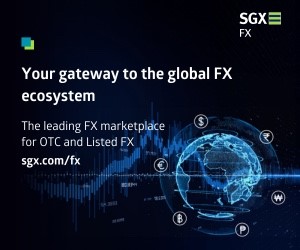Seven Things You May Not Have Spotted in the FX Turnover Surveys
Posted by Colin Lambert. Last updated: August 6, 2023
We’ve been trawling through the latest FX turnover reports from the UK, US, Singapore, Hong Kong, Japan, Australia and Canada, and here are some micro-trends or observations you may not have spotted.
1: It wasn’t all bad news in the UK report. While the biggest FX products, spot and swaps, saw activity decline quite sharply in the UK, the picture was very different in the other products. Both outright forwards and NDFs hit new highs for the UK survey and while the latter was only relatively slightly up on the previous peak (by just over 5%), outrights smashed through the precious ceiling, set in April 2022, by almost 20%. A decade ago in the April 2013 report, outrights were just 20% of the spot total in the UK, they are now half. For all the focus on NDFs in the technology world, their deliverable cousins seem to be do rather well.
2: The Asian reports remain frustrating! The data provided by the Singapore FX Committee remains very thin, which is frustrating given the growth in the centre over the past decade. Given how NDF volumes have barely moved in the US over the past 10 years, one suspects the growth is largely in Asia – something picked up by the London report. How much better would it be if Hong Kong, Japan and (especially Singapore broke out NDF data? Then we would have a much better idea. And while we’re at it, (Japan apart) some execution style data would also be great!
3: Canadian banks still call each other. It is noticeable in the execution data section of the CFEC report that the majority of spot FX business executed in Canada is between Reporting Dealers who call each other. The top banks’ customers largely use multi-dealer platforms and Other ECNs (non-LSEG Matching/EBS Market) to execute, but 67% of spot business executed between the nine reporting banks goes direct through non-intermediated channels. Presumably this means LSEG’s Dealing service as well as the firm’s and Bloomberg’s chat systems – they may even pick up the phone!
4: PB is a trans-Atlantic business. Whether you’re based in the US or UK, the chances are if you run a prime brokerage business you’re on the plane a lot! Although the UK executes over double the amount of spot volume every day than the US, there is just about $45 billion between them in terms of trades via a PB. Just over 89% of US spot business is prime broked – evidence the non-bank market makers hold sway in the centre, while in the UK is it just under 44%. Activity levels in the UK for PBs are barely changed over the past seven years, while in the US they are up almost 30% (data was first reported in April 2016 in the US, hence the time horizon).
5: Hong Kong is helped by RMB, but also something else. It would be easy to think Hong Kong’s impressive growth over the past few years (up 62% since it started reporting in April 2017) is a China story – and it is, but with help. RMB business has risen from $67.7 billion per day in that first report to just over $150 billion per day in April 2023. At the same time though, HKD volumes have risen from $69.3 billion to $135.7 billion. Very much dual drivers of the centre’s volume growth, but probably reinforcing its more recent image of a local market rather than global.
6: Australia is recovering. Just over five years ago, in the October 2018 survey, Australian ADV plummeted to just over $112 billion per day, down 38% from just five years previously. Five years on from that nadir, the market is bouncing back quite nicely, with volumes over $152 billion, the highest since April 2014. FX swaps has driven a fair bit of the recovery, spot and options are flat, but our old friend, outright forwards (including NDFs) just matched its peak from April 2022 – there’s a trend there perhaps?
7: And finally (no it’s not back), ever wondered what the big players really see in spot in a day? The UK market share report indicates that the share of spot business in that centre handled by the top six Reporting Dealers was 77.3%, up from the 72-73% level at which it spent much of the previous decade. This means these six firms in the UK only, collectively handle $670 billion per day, which compares favourably with the next six, who collectively see just shy of $155 billion per day.
In the US, the top four dealers see just over 73% of spot volume per day, a collective $278.5 billion. So, assuming the top four are the same in both centres (not guaranteed of course), and topping it up elsewhere, thew answer to the question you’ve probably never asked is…more than $200 billion of spot per day.



